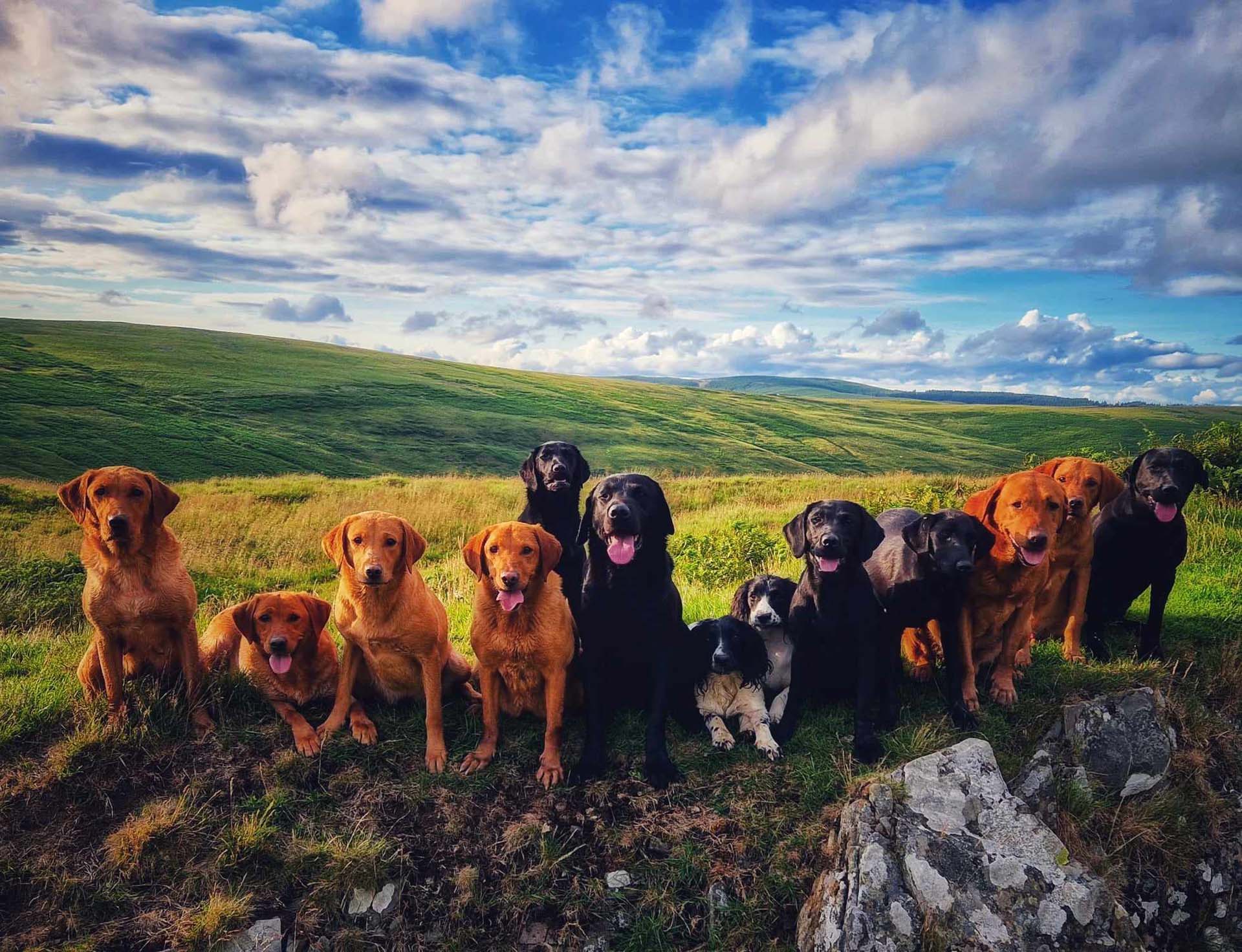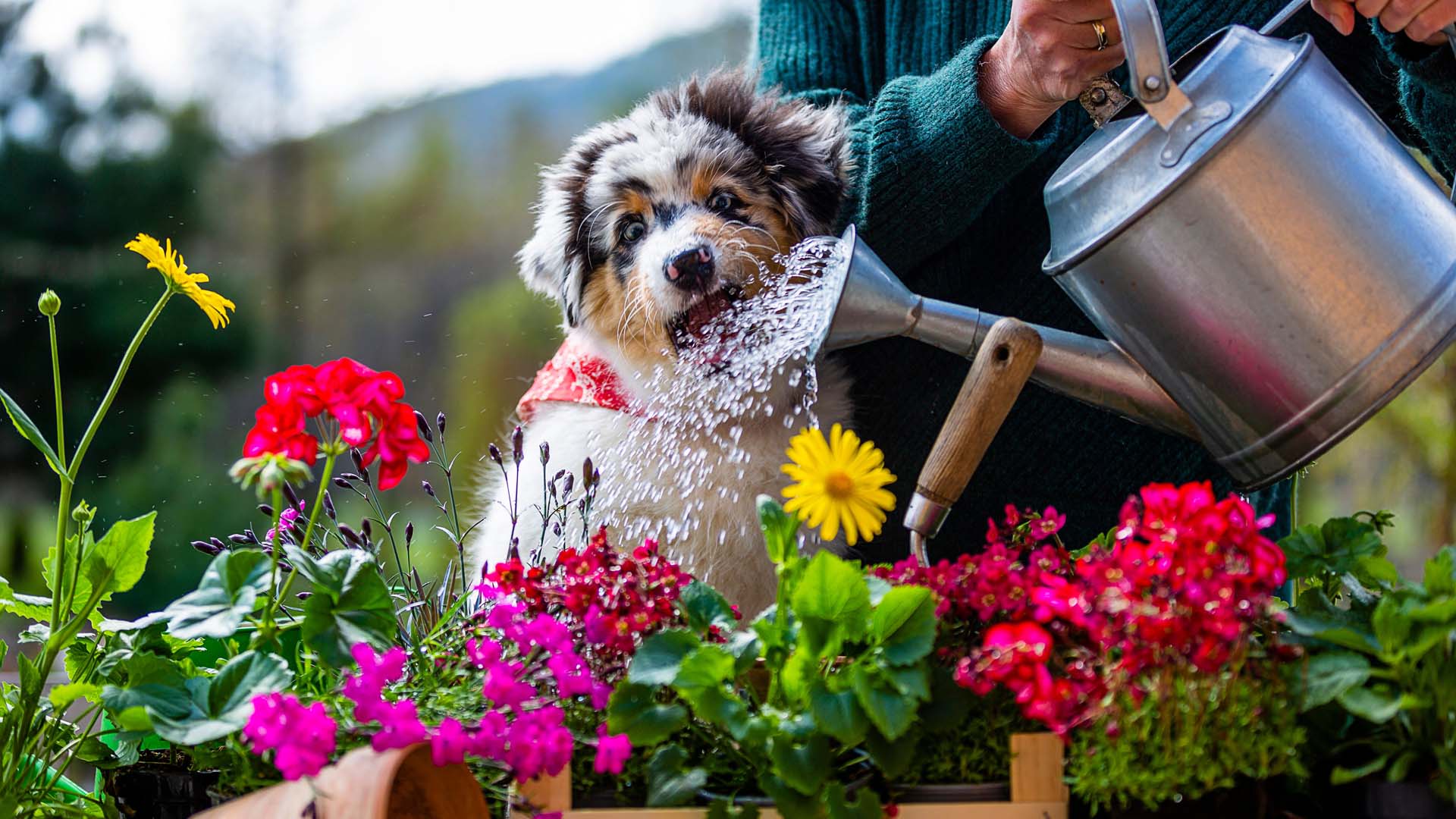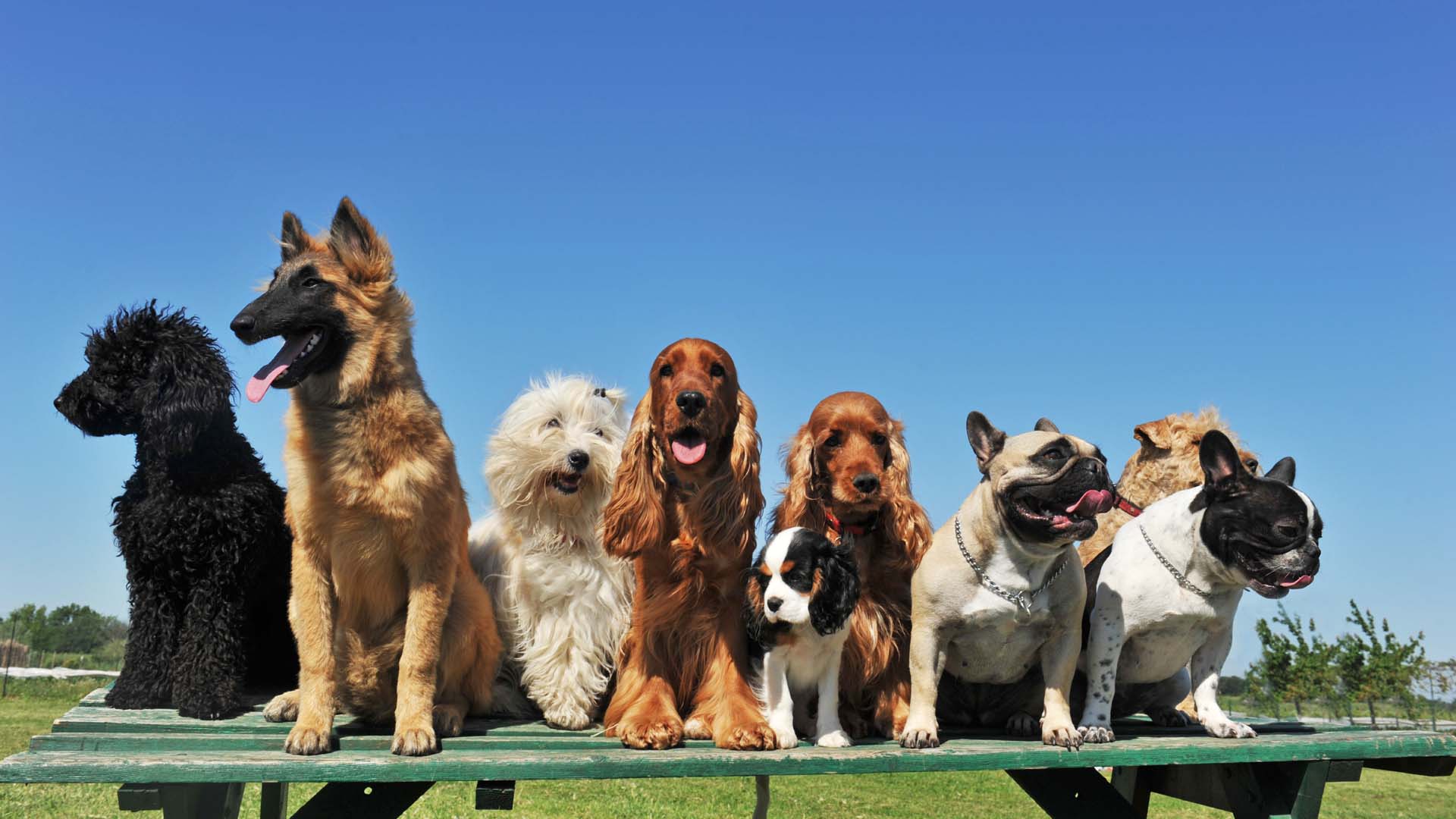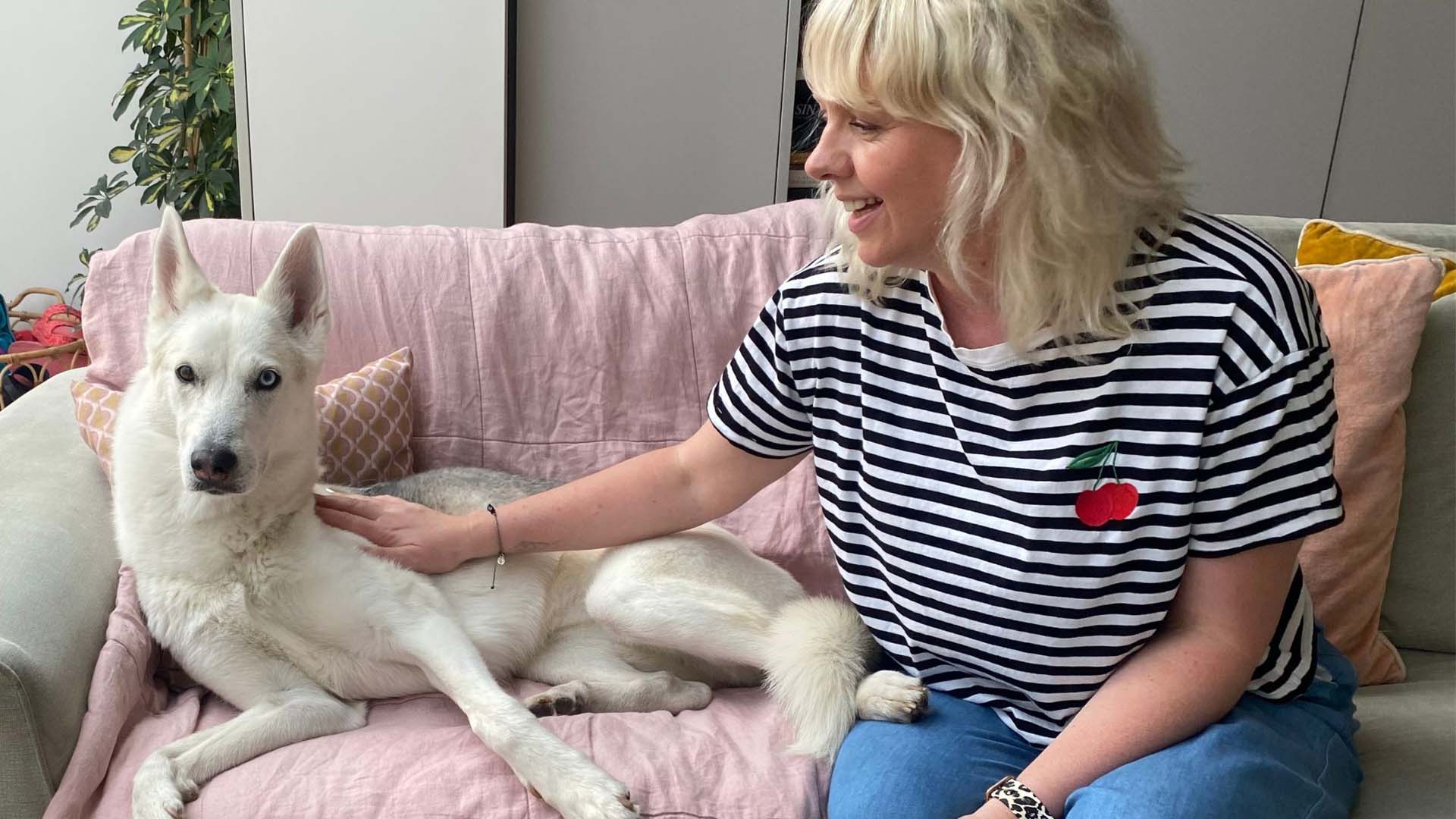
While some dogs might love basking in a sunny spot in the garden or by a window, too much sun can be as bad for dogs as it is for us.
What's more, dogs do not sweat through their skin, but only through the pads of their feet. They cool themselves by panting, which releases heat through the evaporation of moisture (saliva) from their extended tongues. Panting will be the first sign that your dog is getting hot, and hopefully you will know your pooch well enough to recognise whether his or her panting is within the normal range.
However there are far more signs to familiarise yourself with to be aware of heatstroke or sunstroke symptoms.
Lethargic, unresponsive behaviour, bloodshot eyes, a red tongue, excessive panting and drooling are all signs that your dog is overheating.
Always seek veterinary advice if your dog is displaying the following symptoms during a warm spell or a period of overexertion:
Dogs can develop diarrhoea or soft stools from the stress of overheating during extreme weather such as heatwaves.
This is known as stress-related colitis, an inflammation of the colon. Human suffers of IBS might also find it gets worse during hot weather for similar reasons.
Most dogs begin to show signs of overheating at temperatures of 27C and above but some are more susceptible. The short noses and flat faces of brachycephalic (snub-nosed) breeds like bulldogs, pugs and Pekingese inhibit efficient panting, and thus cooling.
Breeds with undercoats, like German shepherds, Pomeranians and huskies are also more prone to overheating, especially if they have had their fur clipped as the guard hairs (the slow growing, weatherproof outer layer) would normally provide some protection from the sun's UV light.
Small dogs overheat quicker than large ones, with older, overweight dogs more at risk.
In the heat, think feet. Cooling your dog’s paws is always a good starting point. Take them paddling or set up a tub of water they can stand in. If you spray them with water make sure it gets under the belly, between the legs and under the tail (where the major blood vessels are located), not just on their back.
Wrap them up in, or let them lie on wet towels but cool them gradually with cool, not cold, water to avoid causing shock. Some pet shops sell gel-filled cooling mats for indoor cooling without a watery mess.
Zellar Dog Cooling Mat Large - RRP £16.99
If you have a hot house, for example rooms with large, south-facing windows or a conservatory, make sure you take steps to keep your house cool and that there's a shady spot for your dog to rest. Keeping the curtains closed in certain rooms during the day will help.
Not even for a few minutes with the windows open. You might get delayed and car interiors can soar to dangerously high – even fatal – temperatures in minutes. When left in the sun for an hour a car's interior can easily reach 47C/116F. It’s not illegal to leave dogs in parked cars but owners will be prosecuted if an animal is seen to be suffering. When driving, leave windows slightly open or use the air-conditioning.
"If you need to drive somewhere, either leave your dog at home in a part of the house where it's cool, or tale them out of the vehicle with you when you exit it yourself. Do not ever leave them in a hot car - even if it doesn't feel too hot it can be," says Paul Houlden, founder of Animal Rescue Foundation.
Call 999 if you see a dog in a hot car. A dog in distress in a hot car is an emergency and the police will advise you what to do based on the situation.
If you have a blanket or towel to hand you can drape it over the windows facing the sun to help cool it down before the police arrive to break in.
If you decide to break into a car without proper justification, this could be classed as criminal damage and you may need to defend your actions in a court. Always call the police using 999 and tell them what you intend to do and why
In hot weather it’s time to ease back on the exercise, and maybe manage your dog’s exertions by keeping him on a lead. Before 8am and after 7pm are best for walkies; no self-respecting wolf would go out hunting in the mid-day sun.
Vets Now recommend caution when walking a dog at 20-23C, and extreme caution at 24-27C, with an 8/10 risk rating. Anything higher has a very high risk of being life threatening. If you live in a flat with no garden and need to take your dog out during the day for toileting, keep it brief and walk on the shady side of the street.
Hot pavements, road surfaces and sand can seriously burn a dog’s pads. If you can’t hold your palm on a pavement for 15 seconds it’s too hot. Dog boots can be a pad-saving accessory for city-dwelling mutts in the summertime.
Hot Pavement Pawtector Dog Shoes - RRP £32
It’s painfully obvious but especially important. Plastic bottles with attached drinking trays, available from pet shops, are great for walks and car journeys. Plop a few ice cubes into the water bowl at home. In hot weather water and found should be changed regularly.
Ice cubes can be a cooling treat during a heatwave, and you can even freeze low-salt beef or chicken broth in ice-cube trays for a treat, but give them only a few at a time, as too many ice cubes at once can shock the system.
Longhaired breeds might benefit from a summer trim but never cut the fur shorter than one inch as this will increase the chances of sunburn.
Double coated dogs such as huskies and collies can have their undercoat thinned with a deshedding tool such as a Furminator. It's important not to cut their guard hairs (the rough, weatherproof outer coat many working breeds have) as they grow back much slower than the undercoat and it could actually cause the dog to overheat as the guard hairs protect their skin from the sun as well as wet weather.
Even outside dogs should spend the hottest time of day indoors.
"A spot that is cool and well-ventilated will suit your dog find in hot temperatures, as it gives them shade and protection from the incessant heat given off by the sun," says Houlden.
Although you personally may be enjoying the high temperature, make sure part of your house is kept cool (curtains drawn, for example) for your dog to go and lie in.
When they are outdoors, provide a shady spot and a space for them to dig. Dogs dig dens to stay cool in, so don't be surprised to see them digging a shallow pit in flower beds or herb gardens.

While iPhones for pooches are a way off, there’s plenty of dog tech you can still invest in.




